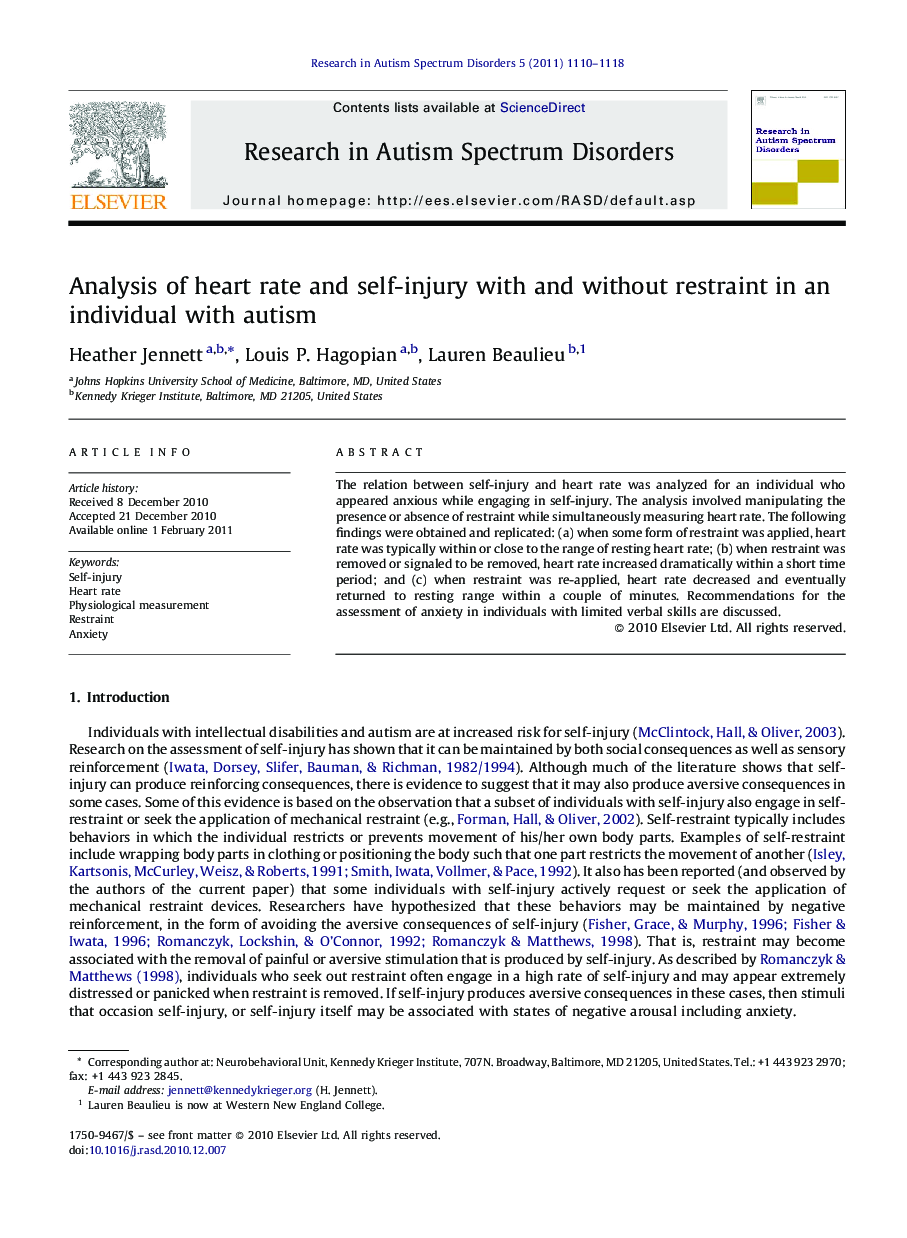| Article ID | Journal | Published Year | Pages | File Type |
|---|---|---|---|---|
| 370768 | Research in Autism Spectrum Disorders | 2011 | 9 Pages |
The relation between self-injury and heart rate was analyzed for an individual who appeared anxious while engaging in self-injury. The analysis involved manipulating the presence or absence of restraint while simultaneously measuring heart rate. The following findings were obtained and replicated: (a) when some form of restraint was applied, heart rate was typically within or close to the range of resting heart rate; (b) when restraint was removed or signaled to be removed, heart rate increased dramatically within a short time period; and (c) when restraint was re-applied, heart rate decreased and eventually returned to resting range within a couple of minutes. Recommendations for the assessment of anxiety in individuals with limited verbal skills are discussed.
Research highlights▶ The relation between self-injury and heart rate was analyzed. ▶ The presence of restraint was manipulated. ▶ With restraint present, heart rate was in the resting heart rate range. ▶ Without restraint, heart rate increased dramatically. ▶ A physical activity control ruled out physical exertion as the cause of increase.
